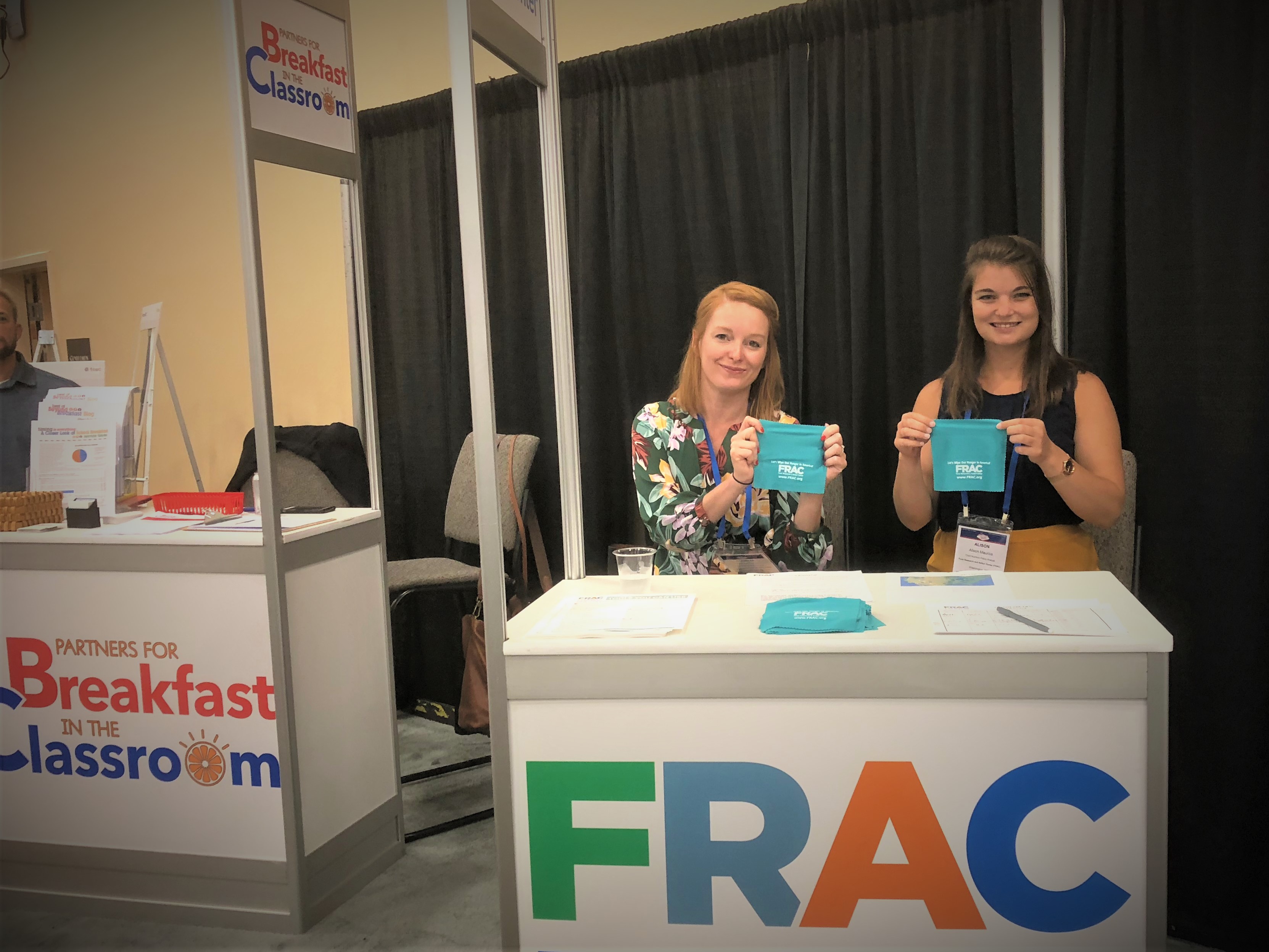By: Clarissa Hayes and Alison Maurice, Food Research & Action Center
 Thousands of school nutrition staff from across the country arrived in Las Vegas the second week of July for the School Nutrition Association’s Annual National Conference. We were thrilled to have a FRAC booth there that allowed us to connect with many of the attendees who poured into the exhibit hall for endless food samples, equipment demos, plenty of “swag,” and good information on operating the school nutrition programs. The attendees also spent a lot of time in education sessions. Two of them were led by FRAC staff.
Thousands of school nutrition staff from across the country arrived in Las Vegas the second week of July for the School Nutrition Association’s Annual National Conference. We were thrilled to have a FRAC booth there that allowed us to connect with many of the attendees who poured into the exhibit hall for endless food samples, equipment demos, plenty of “swag,” and good information on operating the school nutrition programs. The attendees also spent a lot of time in education sessions. Two of them were led by FRAC staff.
On the afterschool front, FRAC led a session on best practices for operating the Afterschool Meal Program. Two leaders from southern California school districts — April Brown, with Hesperia Unified, and Betty Crocker, with Redlands Unified — helped with the presentation. They shared their expert advice for running successful and cost-effective afterschool programs.
Common themes across both of their presentations included the benefit of switching the afterschool offering from snacks to meals; serving kid-friendly meals that don’t take much prep time; building relationships with out-of-school time partners; and the importance of getting buy-in from principals. Both school districts stressed that serving afterschool meals strengthened their overall operations by allowing them to draw down more in federal reimbursements without too many added logistics.
On the school breakfast meals front, FRAC teamed up with Mark Bordeau, senior food service director at Broome Tioga BOCES, and vice president of the New York School Nutrition Association, to present about offering free school meals to all students through the Community Eligibility Provision and Provision 2, and about implementing breakfast in the classroom programs.
Despite FRAC’s school breakfast session being the last one of the entire conference, committed school nutrition staff showed up ready to listen, ask questions, and share best practices used in their school districts. The presentation quickly evolved into a rapid-fire question-and-answer session on how to determine which federal reimbursement option to use, best practices for collecting alternative income applications at community eligibility schools, grouping community eligibility schools together to get the optimal federal reimbursement, and strategies for increasing school breakfast participation.
Despite the heat, we, like the thousands of other attendees, left the conference energized after connecting with new partners and talking with attendees about best practices to implement robust school meals programs in their school districts when they return home.


